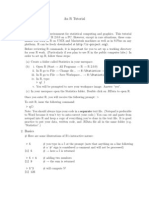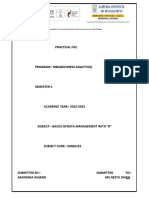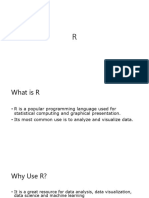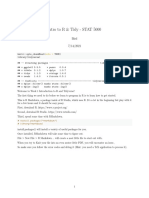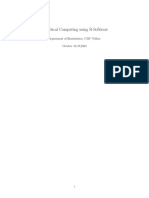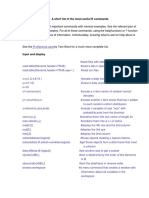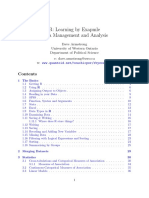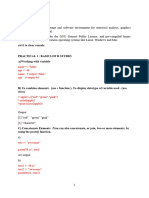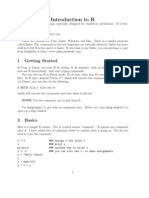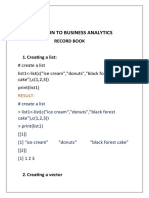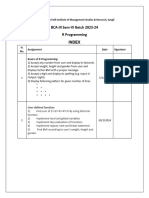0% found this document useful (0 votes)
21 views22 pagesR Program
The document provides a comprehensive overview of basic operations and data structures in R, including arithmetic operations, conditional statements, functions, and data types such as vectors, lists, matrices, arrays, and data frames. It also covers data visualization techniques using ggplot2, file handling with CSV, database operations with SQLite, and statistical analysis including mean, median, mode, and distributions. Additionally, it demonstrates time series forecasting using ARIMA models and various plotting techniques.
Uploaded by
sivakamiCopyright
© © All Rights Reserved
We take content rights seriously. If you suspect this is your content, claim it here.
Available Formats
Download as DOCX, PDF, TXT or read online on Scribd
0% found this document useful (0 votes)
21 views22 pagesR Program
The document provides a comprehensive overview of basic operations and data structures in R, including arithmetic operations, conditional statements, functions, and data types such as vectors, lists, matrices, arrays, and data frames. It also covers data visualization techniques using ggplot2, file handling with CSV, database operations with SQLite, and statistical analysis including mean, median, mode, and distributions. Additionally, it demonstrates time series forecasting using ARIMA models and various plotting techniques.
Uploaded by
sivakamiCopyright
© © All Rights Reserved
We take content rights seriously. If you suspect this is your content, claim it here.
Available Formats
Download as DOCX, PDF, TXT or read online on Scribd
/ 22





